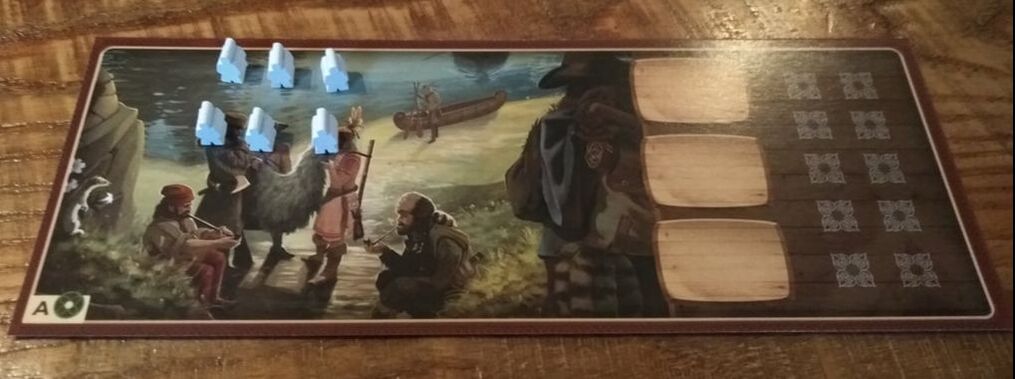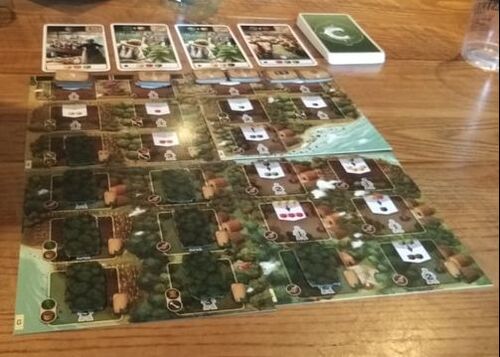|
6th August 2019 We have arrived at Tuesday evening and thus come to gaming at 'The Sovereigns' in Woking. Century: The New World is the 3rd and final instalment in the 'Century trilogy'. You can read my post on Century: Spice Road here. You can read my post on Century: Eastern Wonder here. Century: The New World can be combined with the other 2 games to create one massive game, or in other combinations to create a total of 7 games. Century: The New World differentiates itself from the other 2 games by being a worker placement game. I guess the game board represents plantations or farms and trading posts of the early settlers of the new world. Whats in a game? If you've played either of the 2 previous games, you'll be on somewhat familiar ground here and recognise some of the components:
New Components:
How's it play?
First there is of course set up.
Taking turns, the active player can perform 1 of 2 actions.
Endgame The endgame is triggered when a player acquires their 8th card. In which case play progresses until the round is over. Upon which scores are totted up. Points are earned from:
Overall The game's core mechanic of trading cubes until enough are accumulated to buy cards that earn victory points is fundamentally unchanged from the first 2 games (Which is to be expected.). So if you like this, I imagine you may find Century: The New World appealing. What this game adds is a fairly average implementation of worker placement rules. It's nothing to write home about, but it functions well enough. However the cards and bonus tiles add an extra layer of depth to the game. When buying a card, you now need to consider factors other than just points value. Acquiring extra workers and spaces can be very useful (Although the latter is potentially useful to all players.). Acquiring bonus tiles is also an important strategy to earning points. But taking tiles is an important decision, you get to have 3 and making a poor choice early on can hinder the potential to earn points. you have to try and think ahead. The game gives to meaningful decisions to make and find the optimal method to accumulating commodities is key to doing well I think. Century: The New World is not my favourite 'Century' game (That goes to Century: Eastern Wonder.) but I would have no reservation in playing this again.
0 Comments
Leave a Reply. |
AuthorI play, I paint. Archives
March 2024
Categories
All
|



 RSS Feed
RSS Feed
